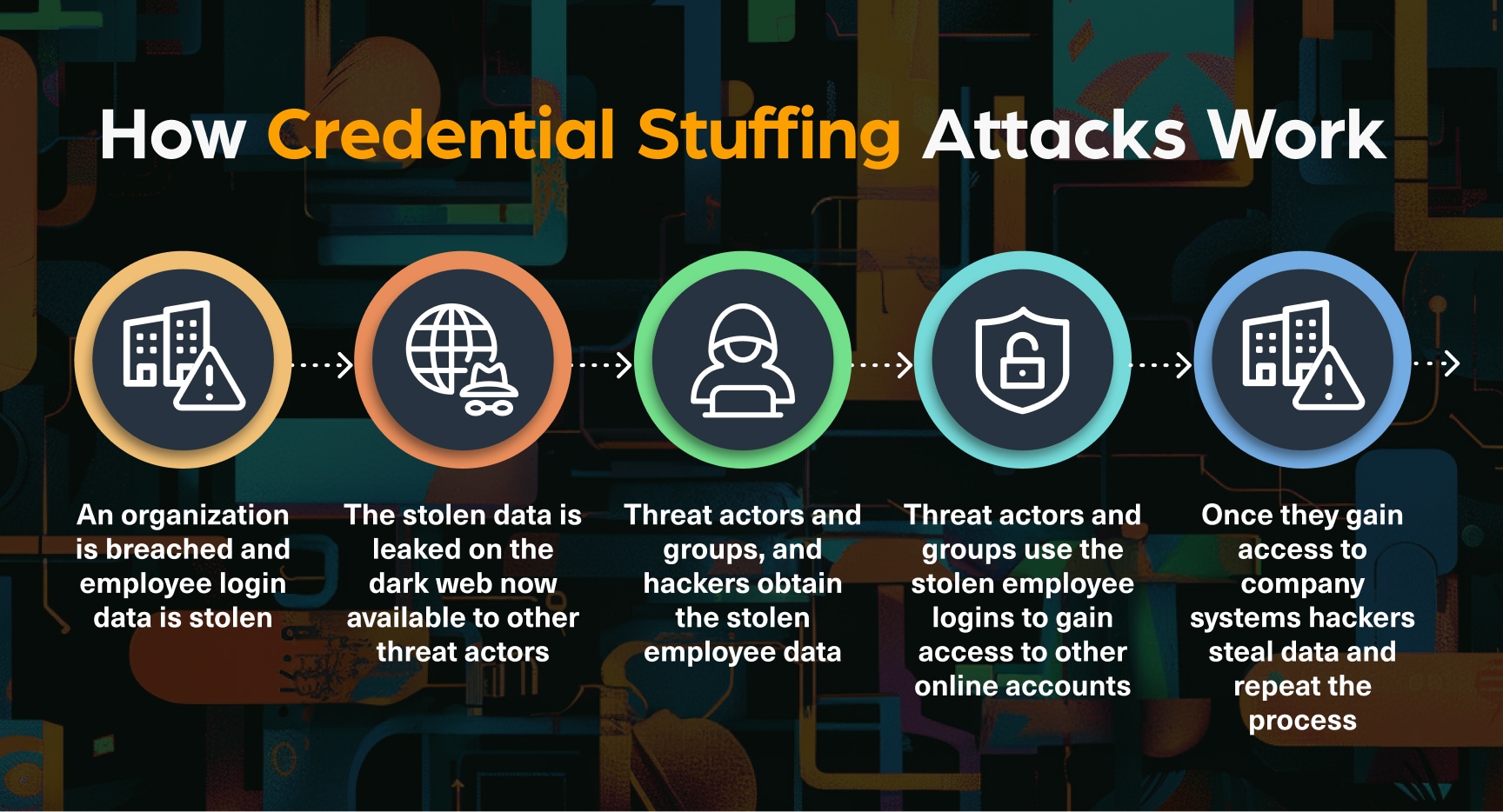How to Automate Supply Chain Risk Reports: A Guide for Developers
Do you use Python? If so, this guide will help you automate supply chain risk reports using AI Chat GPT and our News API.

Account Takeover (ATO) has rapidly become one of the most significant cyber threats plaguing enterprise businesses worldwide. According to Sift, ATO attacks have increased 354% year-over-year in 2023 resulting in nearly $13 billion in associated losses. Beyond the upfront costs of ATO, organizations often face long-term risks such as massive regulatory fines, operational disruption, and degradation of client base and reputation just to highlight a few.
From SMBs to Fortune 500 companies, everyone is at risk.
With organizations of all sizes and in nearly every sector at risk, now is the time to make a cohesive and effective strategy to combat account takeover from the ground up.
The world of account takeover is complicated enough without being lost in the jargon. To streamline your understanding of ATO we’ve defined some of the most significant terms below:
Now that we’ve defined the core elements of account takeover, our focus must shift to the most common vectors for attack. While it’s impossible to list every risk factor or tactic, we’ll present some of the most prominent and widely publicized methods of attack below.

After defining the terms and methods of attack, we shift our collective focus to where account takeover threats originate and to effective strategies to mitigate the risks.
It is easy to get caught up in the hype of the dark web, with its ominous media coverage and perceived barriers to access. But is it really so malicious? What happens on the dark web and how is it different from the open web the majority of professionals have been operating on for decades?
The short answer might not be so far removed from the perceived boogieman lurking in the figurative shadows.
In the following table, you can find relevant types of common illicit content sorted according to the layer of the web and site type we usually find them on and the sort of content:
| Type of Illicit Content | Open Web | Deep Web | Dark Web |
| Stolen Credentials | Phishing sites, paste sites | Private forums, unindexed websites, chatting apps | Data stores, marketplaces, credential dump sites |
| Phishing Kits | Scam websites, forums | Private forums, chatting apps | Marketplaces, forums |
| Botnets | Paste sites, forums | Private forums, chatting apps | Marketplaces, botnet rental sites |
| Fraudulent Transactions | Scam websites, forums | Private forums, chatting apps | Marketplaces |
| Credit Card Fraud | Scam websites, paste sites, data stores | Private forums, chatting apps | Data stores, marketplaces, carding forums |
| Account Data | Paste sites, forums | Private databases, unindexed forums, chatting apps | Data stores, marketplaces, data dump sites |
| Fake Documents | Scam websites, forums | Private forums, chatting apps | Marketplaces |
| Identity Theft Services | Scam websites, forums | Private forums, chatting apps | Marketplaces |
| Social Engineering Kits | Scam websites, forums, paste sites | Private forums, chatting apps | Marketplaces, forums |
Consequently, the dark web is frequented by both new and experienced hackers, who use its various forums to share information essential for carrying out cyber attacks and innumerable fraudulent activities.
Cybercriminals use various hacking forums, marketplaces and datastores on the dark web to sell credentials. The credentials range from financial Information such as bank account details and credit card numbers to corporate credentials like login details for company email accounts and other internal systems.
Some of the ways threat actors use to sell credentials on the dark web include:
According to Egress, 58% of organizations experienced account takeover (ATO) incidents in the last 12 months, with 79% starting from phishing emails that harvested employee credentials. Many of these credentials were obtained through the dark web.
With the increase in dark web marketplaces and the global demand for Malware-as-a-Service, ATO has become a common attack method to breach cyber defenses and steal vital data.
To counter these attacks, organizations are implementing defensive measures such as firewalls, strong system segmentation, and employee cybersecurity training. While these steps can help mitigate and even prevent some attacks, they are not sufficient for long-term risk prevention.
That’s where monitoring the dark web comes in. By tracking the release of stealer logs generated by infostealers, threat intelligence professionals gain critical insights into what data has been compromised.
Stealer logs, compiled by malware like Redline and Raccoon, contain sensitive information stolen from compromised devices. This data includes browser history, cookies, visited websites, installed software, and user information. These logs present a significant risk because they can be exploited or sold by Initial Access Brokers (IABs) to orchestrate various attacks, including ransomware, social engineering, and Remote Access Trojans (RATs).
Most damning about stealer logs is that they are fluid and are constantly being updated with revised and up-to-date compromised data. Where in the past a data breach might only represent a moment in time, stealer logs create a doomsday scenario in which nothing on your device is safe; not your password, your pictures, your every document or email will be secure. until that malware is removed.
To mitigate the risks associated with stealer logs and leaked databases organizations need first to identify the breach and monitor for leaked Personally Identifiable Information (PII) of employees and customers, especially those with privileged accounts.
As any seasoned professional can attest finding stealer logs in the deep and dark web is a complex task. We at Webz.io continuously scan the deep and dark web to expand our scope of stealer logs.
The simplest way to search for them is by using a dark web monitoring tool, such as Lunar.
To illustrate it, we used Lunar’s enriched.domain.value:Airbnb.com filter to retrieve results that mentioned the Airbnb.com domain. We further narrowed our search to stealer logs associated with the Airbnb.com domain using the tag “Stealer_logs”.

By actively tracking stealer logs on the dark web, with dark web monitoring tools like Lunar, Managed Security Service Providers (MSSPs), and Cyber Threat Intelligence (CTI) teams can stay ahead of emerging threats, safeguard client data, and mitigate future cyberattacks.
In this era of evolving cyber risks and even more massive financial consequences we don’t need any more theoretical, or more pie-in-the-sky ideas. With customers fleeing at the first signs of data compromise and devastating corporate fines in toe few organizations can afford the aftermath of a well-targeted ATO attack.
When it comes to mitigating risks from the dark web MSSPs, MDRs and other invested players must create iron-clad approaches integrating a defense-in-depth ideology to stop the torrents of cyber attacks plaguing enterprises worldwide.
Integrating with Existing Security Measures
Additional Measures:
By leveraging dark web monitoring in these ways, MSSPs and MDRs can more effectively identify and counteract ATO threats, providing robust protection for their clients.
Enterprises organizations often employ sophisticated threat intelligence and security tools to safeguard their digital assets and mitigate risks. These tools may include Security Information and Event Management (SIEM) systems, Intrusion Detection Systems (IDS), and advanced endpoint protection platforms.
However, as cybercriminals increasingly leverage the dark web to trade stolen credentials and other sensitive information, integrating dark web monitoring and analyzing stealer logs have become critical components in countering Account Takeover (ATO) threats. By enhancing their existing security measures with dark web intelligence, enterprises can stay ahead of potential ATO attacks and protect their critical data.
Some of the steps enterprises can take include:
Never in history have the risks and whole-scale destruction emanating from the dark web been so great. From ad hoc players to major multinational hacking groups everyone is utilizing the dark web’s vast illicit resources to compromise your company’s data. To counter the ever-rising swells of malicious data leaks and account takeovers a cohesive defense in depth focused policy must be implemented.
By continuously monitoring the dark web and tracking infected devices with info stealers (using such tools as Lunar) securing endpoints, and enhancing employee cyber education organizations large and small can drastically reduce their attack surface and mitigate the risks of ATO.
Dark web monitoring offers a proactive defense against these evolving dangers. Choosing the right dark web monitoring tool or data via dark web monitoring API can help your organization track evolving threats, fortify defenses, and swiftly respond to a constantly evolving malware and phishing threat landscape.
Talk to Webz.io to discuss how we can help you – whether you need a dark web monitoring tool or dark web data to automate your own dark web monitoring solution.

Do you use Python? If so, this guide will help you automate supply chain risk reports using AI Chat GPT and our News API.

Use this guide to learn how to easily automate supply chain risk reports with Chat GPT and news data.

A quick guide for developers to automate mergers and acquisitions reports with Python and AI. Learn to fetch data, analyze content, and generate reports automatically.